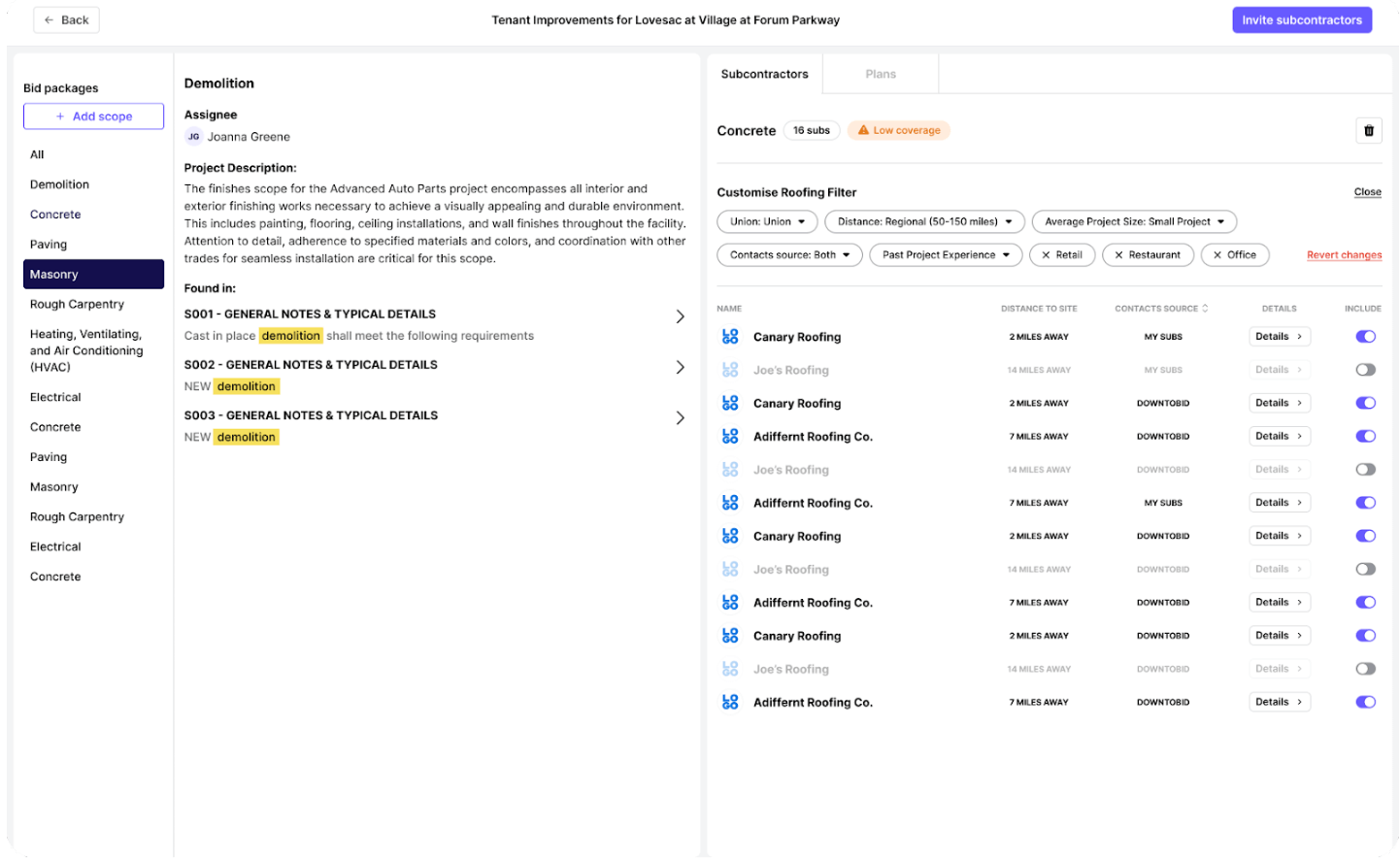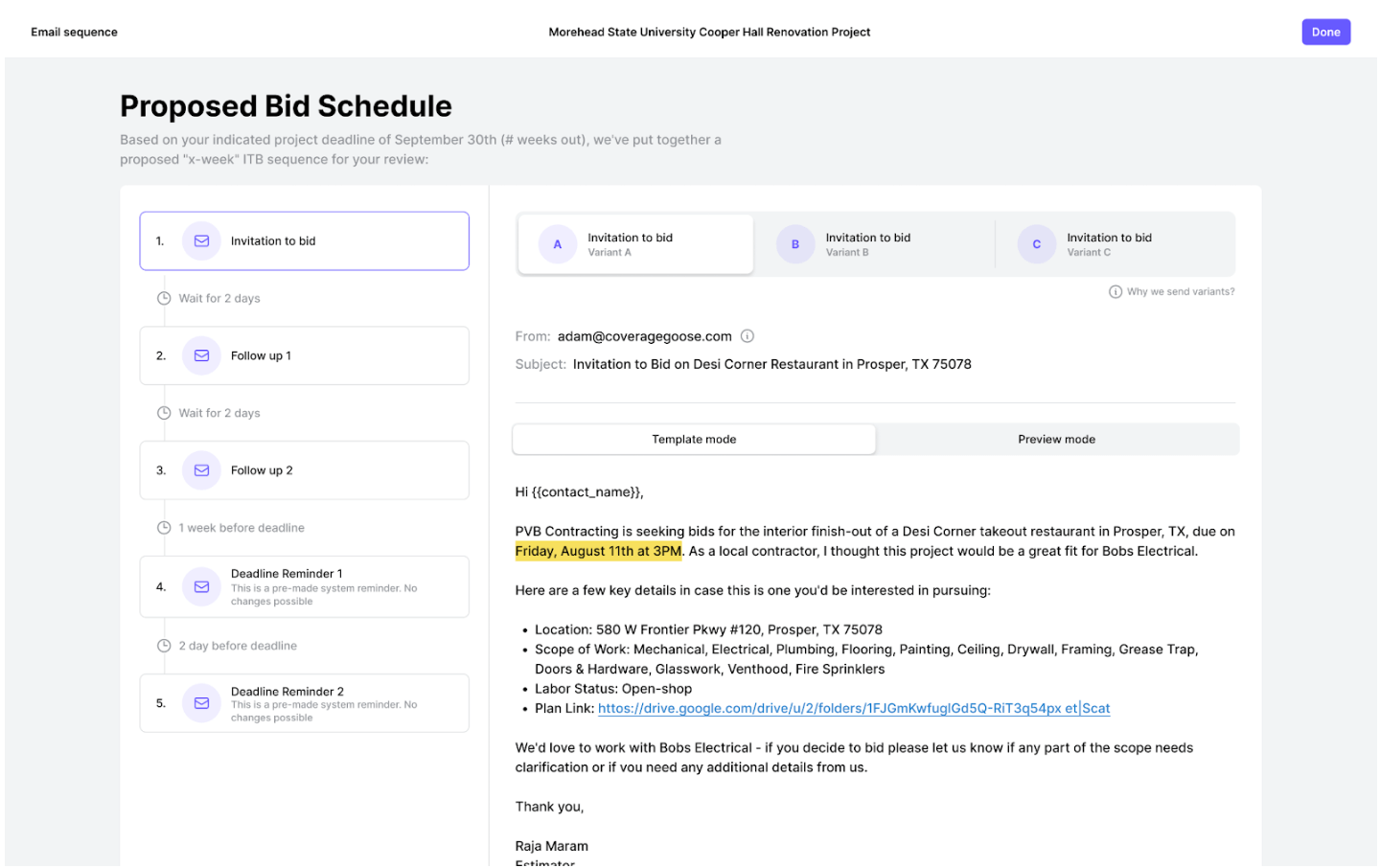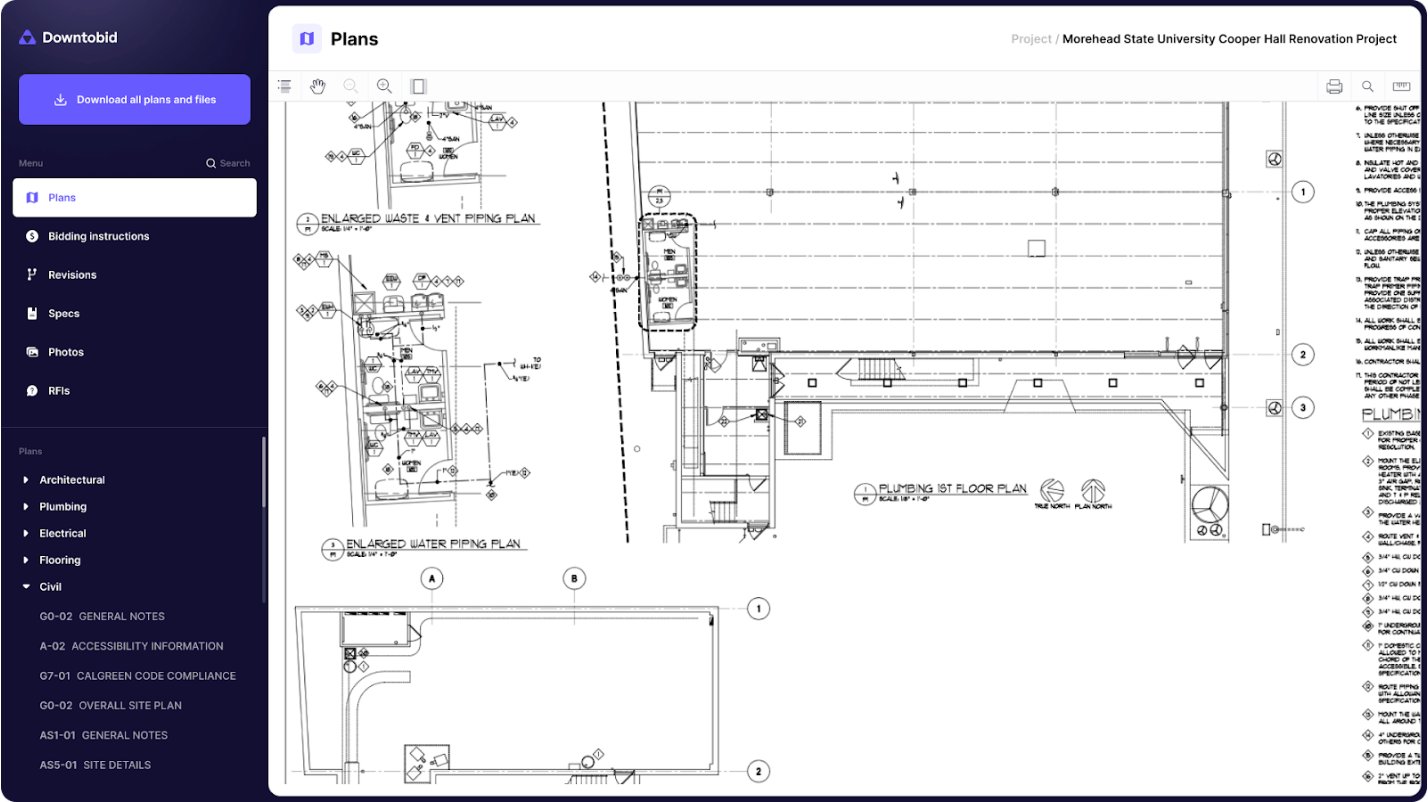Bid Preparation in Construction: Discover How to Create Winning Bids
Written by Bridget Cooper

Securing bids is no easy feat. With success rates hovering around 10-20%, contractors find themselves swimming upstream, vying against equally skilled and experienced competitors. The stakes are high, and the odds seem daunting.
To succeed, many contractors resort to a common, yet flawed strategy: bidding on every project that comes their way in the hopes of landing something.
It makes sense — in theory, casting a wide net increases the chances of winning a project. But this is a game of chance rather than strategy.
To win more construction bids and secure lucrative projects, you need to rethink your bidding approach, and it starts with effective bid preparation.
In this guide to construction bidding preparation, we'll walk you through the steps you need to take to prepare winning bids. From understanding project requirements to presenting your bid in the best possible light, we'll provide you with the insights to maximize your chances of success.
Bid Preparation In Construction: The Complete Steps
Here are the steps you'll need to submit a winning construction bid:
Understand the Project Requirements
It may seem obvious that fully understanding the project requirements is crucial for bidding success. Yet, it's a step that is often overlooked, especially when contractors are faced with looming deadlines and the pressure to submit bids quickly.
Each construction project is unique, and what may seem like a minor detail at first glance can have significant implications for your construction bid. That is why you need to take as much time as needed to fully understand every aspect of bid documents such as:
- Bid submission instructions
- Drawings and plans
- Bill of Quantities (BOQ) or Bill of Materials (BOM)
- Contract documents and construction contract (Lump sum contract, Unit price, Guaranteed maximum price (GMP), Cost-plus contracts, etc)
- Scope of Work (SOW)
- Insurance and licensing requirements
- Specifications on project delivery method (Design Build (DB), Design Bid Build (DBB), Construction Management-at-Risk (CMAR) etc)
If, during this process, you realize that your construction company lacks the capacity to fulfill the project's demands, it's better to step back than to bid blindly.
Also, if any aspect of the bid package is unclear, reach out to key stakeholders – architect, project owner, general contractor, or even construction manager. Be cautious of cut-off dates for questions, though. These are the deadlines that allow the project team to make necessary adjustments and issue updates to all bidders, so you need to stay on top of them.
Conduct Site Visit and Analysis
Most project owners require bidders to attend pre-bid meetings and visit the project site. While this might seem like just another checkbox to tick, these site visits can be very helpful. They offer a firsthand look into the unique characteristics and challenges of each project site.
Construction sites can be naturally unpredictable. Visiting them them personally allows you to find hidden obstacles — such as uneven terrain or limited accessibility — that may require additional expenses for transportation, equipment, material storage, and labor.
A site visit also provides a rare opportunity for client interaction. By walking the site together with your client, you can address any concerns upfront, align expectations, and discuss the project delivery method in more detail.
Consider the following key things when conducting a site visit:
- Analyze the potential impact of construction activities on the surrounding neighborhood
- Identify environmental protections needed during construction
- Assess the structural integrity of existing buildings or infrastructure.
- Determine if any relocations or adjustments are necessary to accommodate the project
- Evaluate the site's accessibility for construction managers, equipment, and materials.
- Assess the potential impact of construction activities on the surrounding area.
- Determine available space for construction equipment and materials.
- Ensure the presence of suitable entry points, staging areas, and facilities for construction personnel.
- Identify potential safety hazards on the site, among other things
By uncovering any potential pitfalls during your site visit, you can ensure that your bid accurately reflects the true scope and cost of the project.
Estimate with Precision
It's almost impossible for your initial construction estimate to perfectly align with the final construction project cost. But that doesn't mean you should cut any corners when it comes to estimation.
Your goal isn't just to win bids. It's to secure projects that maximize profitability and bring you peace of mind.
A well-calculated estimate helps you:
- Anticipate potential challenges such as cost overruns, supply chain disruptions, and other financial difficulties, minimizing the risk of unwelcome challenges down the road.
- Ensure your offer is fair for everyone involved in the bidding process.
- Allocate resources effectively — whether you’re determining the perfect amount of concrete for a foundation or the required number of skilled laborers to hit a milestone.
A big part of getting your estimate right is the takeoff. It lays the foundation for a precise estimate, ensuring that every item and material needed is accounted for — from concrete and steel to fixtures and finishes.
To improve the accuracy of your takeoff, consider using take-off software like OnCenter, AutoDesk, or Planswift. They can help you determine areas and lengths more precisely in a fraction of the time it would take manually.
After completing the takeoff, it’s time to tie dollar amounts to the essential components: labor, equipment, and materials. This involves researching market prices, supplier quotes, and historical data to determine the cost per unit for each.
Of the three, labor costs can be the trickiest to estimate. You have to consider factors like employee turnover, absences, and injuries that negatively impact the costs.
And even under ideal conditions, no two workers work at the same rate. So you’ll also have to account for skill levels, project complexity, and personal issues to accurately predict the person-hours required. To be safe, it's wise to include a significant contingency in your labor estimate to cover the factors above.
“Measure twice, cut once" applies to estimations, too. Before finalizing your estimates, double-check your findings and measurements to catch any discrepancies or oversights.
And if your budget allows, consider investing in another construction estimator to review your cost estimate. An additional set of eyes can help identify gaps, clear any assumptions, and ensure the completeness of the project scope.
This extra attention to detail can make all the difference in submitting a winning bid.
Simplify the Construction Bidding Process with DowntoBid
If you secure the project, you might find yourself on the other side of the table – evaluating bids from subcontractors. Despite what you may think, this task can be just as exhausting as the bidding process itself.
Luckily for you, our bid preparation software can accelerate this process, making it more efficient and freeing up your valuable time for other project aspects.
Sign Up for Free
With just a few clicks, you can upload your entire project plans, and the platform will produce complete bid packages and tailor-made ITBs.

You also get a plan room which collects behavioral data on subcontractor interactions with your project, providing you with valuable insights.

You can also use the platform to provide feedback on subcontractor bids throughout the process, promoting transparency and building contractor relationships.

You can try it for free today to experience the platform's features.

Analyze and Mitigate Risks
Construction projects are riddled with uncertainties and risks that can throw a wrench into your plans.
These risks can come in the form of:
- Supply chain disruptions
- Regulatory changes
- Weather-related risks
- Fluctuating prices, among others
Left unaddressed, these risks can compromise project budgets, cause potential delays, and, even worse, pose safety hazards to workers and the general public.
Ultimately, project owners want assurance that you can complete their construction project on time, within budget, and to their satisfaction. A well-thought-out risk analysis can provide this assurance. It allows you to anticipate potential pitfalls and come up with proactive solutions to address them.
For example, you can:
- Transfer risk through insurance or contracts.
- Pinpoint factors that might drive up construction costs and create plans to control those expenses.
- Include contingency plans in the project schedule to account for potential delays
If you find challenges that could impede progress, assess the probability and impact of each.
Low probability risks with low impact — such as occasional material shortages, equipment malfunctions, or moderate weather fluctuations — might be easier to handle and probably won't jeopardize the whole project. In contrast, high probability risks with high impact — like key personnel resignation — could seriously hurt the project's profitability and project costs.
All in all, identifying and evaluating possible risks during bid preparation puts you in a better position to handle tough situations when things don't go as planned.
Create a Comprehensive Schedule
Before submitting your bid, evaluate the feasibility of the timeline provided by the project owner.
Are there potential resource constraints or shortages that could impact the schedule? Can you realistically finish the project on time with the resources available? Are there penalties or incentives tied to project completion dates?
Once you've figured that out, the next step is to develop a comprehensive project schedule, and here's how to approach it:
Decide the order of the tasks needed for the project. Some tasks may be dependent on the completion of others, so proper sequencing ensures a smooth workflow.
Highlight and prioritize critical path activities. These are the tasks that you have to complete on time to keep everything else on track. For instance, pouring the foundation or setting up structural steel. Delays here can compromise the whole timeline.
Think about what could go wrong and devise corrective measures to fix it.
If you realize the timeline doesn't make sense or you don't have the right resources, you need to make the smart business decision to walk away from the bid.
Submit Your Winning Bid
You've put in the hard work, crunched the numbers, and conducted thorough research. It's time to translate all your efforts into a compelling, competitive bid proposal. This proposal needs to mirror the dedication and careful attention you've put in since the start of the construction bidding process.
You can start by restating your understanding of the client's goals, project requirements, and any special details. Highlight how your past projects – similar in scope and complexity to the client's project – have prepared you to tackle this new project.
The research and preparation you've invested in could be the key differentiator in a crowded field of bidders in the construction industry.